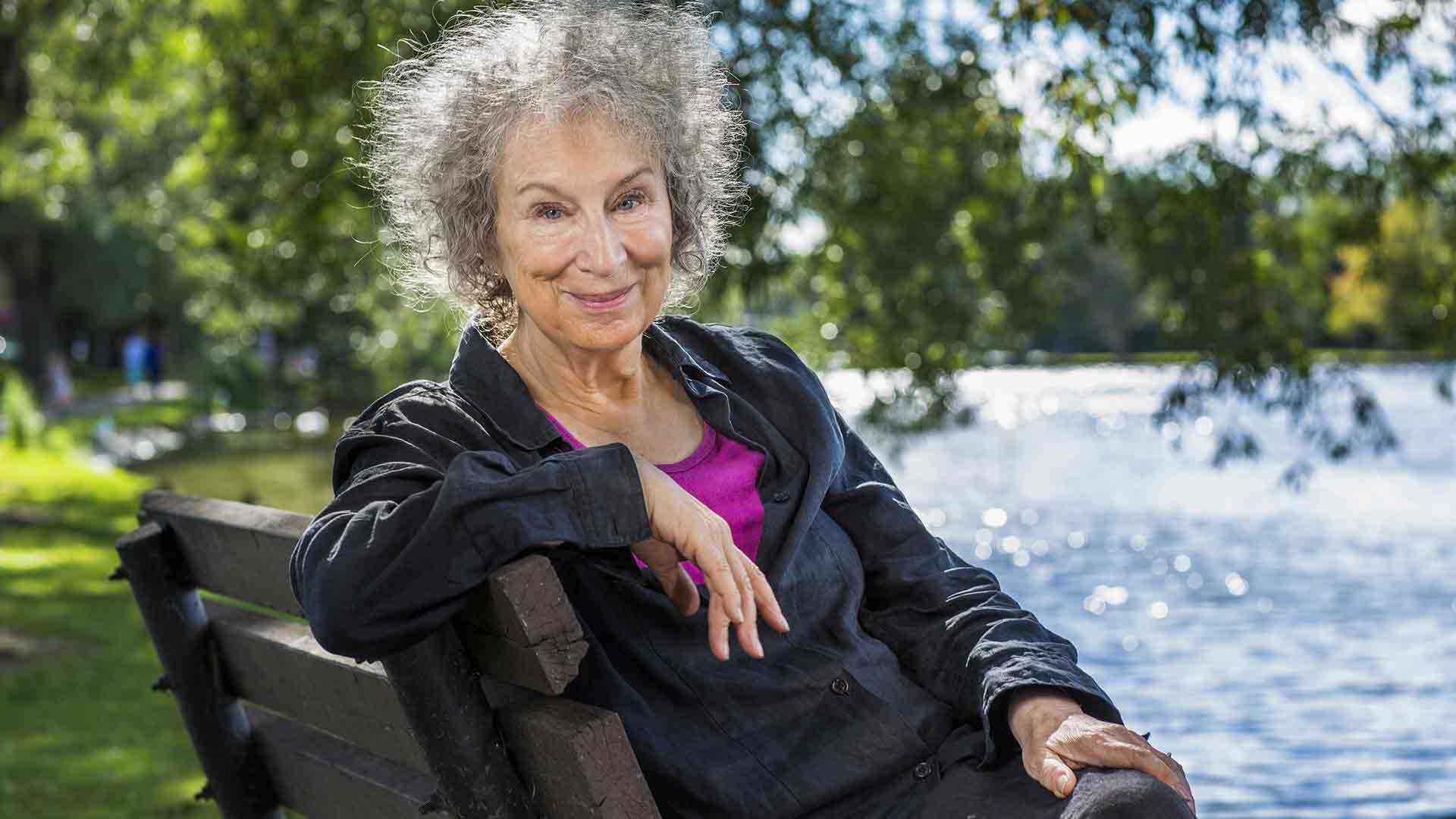Author: admin
-

‘I want to compete for the people’
Having enjoyed a glittering career that has included two Olympic golds and 11 Marathon Major victories, it would be easy to ask what’s next for Eliud Kipchoge.
The Kenyan athletics great responded to that question on Sunday 2 November with…
Continue Reading
-

Systematic druggable genome-wide Mendelian randomization identifies th
Introduction
Low back pain (LBP) refers to pain occurring in the area from the twelfth rib down to the iliac crests and is one of the most common causes of loss of working capacity, constituting a significant global health issue.1 The causes of…
Continue Reading
-

World Indoor Tour calendar expands to record size for 2026 | PRESS-RELEASES
The World Athletics Indoor Tour will return in 2026, featuring a packed calendar of almost 80 meetings across all levels.
With less than three months to go until the first Gold-level action of the season, meetings spread across 24 countries in…
Continue Reading
-

new work from literary titans Margaret Atwood and Salman Rushdie
This week, the reviews were dominated by literary titans Margaret Atwood and Salman Rushdie as well as foremost actor, Anthony Hopkins.
Book of Lives: A Memoir of Sorts (Chatto & Windus), by 85-year-old Canadian novelist, poet and essayist…
Continue Reading
-

Why defending a WTA Finals crown is one of the hardest jobs in tennis
RIYADH, Saudi Arabia — Only three women have repeated as the WTA Finals winner over the past quarter century. Coco Gauff, the defending champion here, is already discovering why.
“I think, A, it’s one of those…
Continue Reading
-

AMD RX 9070 XT price finally hits $599 MSRP after 9 months on sale
(Credit: Kevin Lee/The Shortcut) 
-
💰 The AMD Radeon RX 9070 XT is now available at its MSRP of $599, nine months after its initial release
-
😣 The graphics card was initially praised for its strong performance but was hard to find at its…
Continue Reading
-
-

Do Inflammatory and Nutritional Markers Predict Prognosis in Metastati
Introduction
Lung cancer is the second most common type of cancer in women and men, but it is the most important cause of cancer-related deaths.1 Non-small-cell lung cancer (NSCLC) constitutes approximately 85% of all lung cancers.2 Currently, immunotherapy is the main treatment modality for NSCLC cancer without driver mutation.3
Nivolumab is a human immunoglobulin G4 (IgG4) antibody targeting programmed death-1 (PD-1) receptors. It is an important treatment agent with demonstrated efficacy independent of PD-L1 score in chemotherapy-resistant NSCLC cancer without ALK, RET, or ROS1 mutations. In daily practice, a validated marker that will benefit from treatment in patients receiving Nivolumab has not yet been clearly established. In the Checkmate 227 and CheckMate 568 studies, ipilimumab, a CTLA-4 antibody, was found to be effective together with nivolumab in patients with advanced stage NSCLC patients with tumor mutation burden independent of PD-L1 score. Tumor Mutational Burden (TMB) is an important biomarker in predicting response to immunotherapy. Studies have shown that patients with a TMB greater than 10 mutations per megabase have the highest predicted objective response rate (ORR), reaching up to 38% to 42%, regardless of PD-L1 expression levels. However, despite its predictive value, TMB is not yet used as a standard test due to its high financial cost and the technical complexity of measurement.4–6
In the inflammatory tumor microenvironment (TME), innate immune cells such as monocytes and adaptive immune cells (eg T lymphocytes) produce various inflammatory mediators in response to abnormal signals from the tumor, creating an inflammatory response.7,8 In this process, neutrophils stand out as both effective elements of innate immunity and cellular messengers shaping the adaptive response. They not only suppress the tumor-killing activity of cytotoxic T lymphocytes (CTLs), but also trigger angiogenesis and support tumor progression by secreting numerous growth factors and chemokines, such as TGF-β, VEGF, IL-6, IL-8, IL-12, and matrix metalloproteinases. G-CSF secreted by tumor cells reinforces this tumor-supportive cycle by increasing the number of neutrophils.9–12 Only 15–60% of patients can achieve the expected response with CTLA-4, PD-1 and PD-L1 inhibitors developed through activation of the immune system.13
In this study, we aimed to investigate the prognostic importance of inflammatory and nutritional markers along with clinical parameters on treatment response in metastatic NSCLC patients who received nivolumab treatment.
Materials and Methods
Patient Characteristics
In this multicenter study, data of metastatic non-small cell lung cancer (NSCLC) patients diagnosed and treated between February 2021 and November 2024 at three oncology centers (Ankara Etlik City Hospital, Nevşehir State Hospital, and Ankara Atatürk Sanatoryum Hospital) were retrospectively analyzed. Patients who had previously received 1 line of platinum-containing chemotherapy (cisplatin or carboplatin) and progressed and received second-line immunotherapy were included. (Figure 1) Patients with pathologically confirmed NSCLC who received at least 2 cycles of nivolumab treatment at the metastatic stage with 240 mg every 2 weeks or 360 mg every 3 weeks were included in the study. Patients who had another concurrent malignancy, had active infection findings, did not have driver mutations (EGFR, ALK, ROS1), and had pre-treatment blood parameters, were over 18 years of age, and had ECOG <2 before nivolumab treatment were included. PD-L1 expression was evaluated by immunohistochemical staining using the VENTANA PD-L1 (SP263) assay (Roche, Switzerland) on the BenchMark ULTRA automated staining platform. All procedures, including antigen retrieval and detection steps, were performed in accordance with the manufacturer’s protocol. The Common Terminology Criteria for Adverse Events Scoring System (CTCAE) v4.0 was used for the definition and evaluation of immune-related adverse events (irAEs). The study received approval from the local ethics board (Approval no: 2500043238 / 28.05.2025, Non-Interventional Ethics Committee of Nevsehir Haci Bektas Veli University).
Figure 1 CONSORT Flow Diagram.
Calculation of Indices
In the metastatic stage, the indices were calculated as follows by taking the complete blood count and biochemistry data obtained from the blood samples collected 7 days or earlier before the start of treatment. CRP levels were quantitatively measured using the immunoturbidimetric method, while albumin levels were determined by spectrophotometric methods.
- Neutrophil-to-Lymphocyte Ratio (NLR) = Neutrophils (109/L) / Lymphocytes (109/L)
- Platelet-to-Lymphocyte Ratio (PLR) = Platelets (109/L) / Lymphocytes (109/L)
- Lymphocyte-to-Monocyte Ratio (LMR) = Lymphocytes (109/L) / Monocytes (109/L)
- Systemic Immune-Inflammation Index (SII) = (Platelets (109/L) × Neutrophils (109/L)) / Lymphocytes (109/L)
- Systemic Inflammation Response Index (SIRI) = (Neutrophils (109/L) × Monocytes (109/L)) / Lymphocytes (109/L)
- Prognostic Nutritional Index (PNI) = Albumin (g/dL) + 0.005 × Lymphocytes (109/L)
- Hemoglobin, Albumin, Lymphocyte, Platelet Score (HALP) = Hemoglobin (g/dL) × Albumin (g/dL) × Lymphocytes (109/L)) / Platelets (109/L)
- Neutrophil-to-Eosinophil Ratio (NER) = Neutrophils (109/L) / Eosinophils (109/L)
- C-Reactive Protein-to-Albumin Ratio (CAR): CRP (mg/L) / Albumin (g/dL).
Statistical Analysis
Statistical analyses were performed using SPSS 24 (SPSS Inc., Chicago, III) and Microsoft® Excel® 2019 (Version 2503) 32 bit and R software (R Core Team, 2024). Receiver operating characteristic (ROC) analysis was used to determine the ideal cut-off for the markers and to calculate sensitivity-specificity, and the Youden index method was used.14 In determining the ideal cut-off, long survival was considered a predictive marker. For variables that did not reach a statistically significant p value in the ROC analysis, the median cut-off value was included in the analyses. Kaplan-Meier survival analysis was used to calculate the estimated median overall survival time. Cox-regression analysis was used to calculate the univariate overall survival Hazard Ratio, and the Forward Stepwise (Likelihood Ratio) method was used for multivariate models. In the univariate Cox regression analysis for PDL1, patients with unknown PDL1 were not included, and 3 categories (< 1 vs 1–49 vs ≥ 50) were compared. All patients were included in the other univariate analyses. The proportional hazards assumption was tested using Schoenfeld residuals. The Schoenfeld residuals test was evaluated using the survival library in the R program (R Core Team, 2024).15,16 Variables demonstrating a p-value below 0.05 were deemed statistically significant and consequently included in the final model based on the predetermined retention criteria. Situations where the P value was below 0.05 and the Type 1 error level was below 5% were interpreted as statistically significant.
Results
The study included 229 patients with metastatic non-small cell lung cancer who received nivolumab treatment. The median age of the patients was 63 (min: 41, max: 83). 84.3% (n=193) of the patients were male and 56.8% (n=130) of the tumorswere localized to the right lung. 51.1% (n=117) patients had adenocarcinoma, 40.6% had squamous histology and 8.3% (n=19) had “not otherwise specified (nos) histology”. The PDl-1 score of 49 patients (21.4%) was unknown. More than half of them (43.2%, n=122) were metastatic at the time of diagnosis and the most common metastatic site was bone metastasis (31.4%, n=72). Other clinical and pathological data are shown in Table 1.

Table 1 Clinical and Laboratory Characteristics of the Patients (n = 229)
The ideal cut-off values for inflammatory and nutrient markers to predict long survival were calculated separately. The ideal cut-off value for SII was determined as 1224 (AUC: 0.564, P=0.094), for PNI as 45.1 (AUC: 0.591, P=0.018), for HALP score as 2.0 (AUC: 0.576, P=0.046) and for CAR as 8.5 (AUC: 0.598, P=0.010) and the median values for other parameters were included in the analyses. Sensitivity and specificity are given in Table 2 with AUC 95% Confidence interval.

Table 2 ROC-Curve Analysis for Long-Term Survival and Derived Optimal Cut-off Values
The estimated median survival time of the patients was calculated as 21.2 months (95% CI: 17.4–25.0 months). The factors affecting survival were evaluated according to Univariate Cox regression analysis. Having brain metastasis at the time of diagnosis (HR: 2.08, 95% CI: 1.26–3.44, p=0.004), detection of liver metastasis (HR: 1.85, 95% CI: 1.13–3.03, p=0.014) and presence of adrenal metastasis (HR: 1.64, 95% CI: 1.01–2.66, p=0.045) were detected as negative prognostic findings. High neutrophil-lymphocyte ratio (NLR), which indirectly indicates inflammation (HR: 2.04, 95% CI: 1.42–2.92, p<0.001), high systemic immune-inflammation index (SII) (HR: 1.96, 95% CI: 1.37–2.79, p<0.001), high C-reactive protein-albumin ratio (CAR) (HR: 1.84, 95% CI: 1.29–2.61, p=0.001), high platelet-lymphocyte ratio (PLR) (HR: 1.60, 95% CI: 1.13–2.26, p=0.009) and high systemic inflammation response index (SIRI) (HR: 1.51, 95% CI: 1.07–2.15, p=0.021) were found to be poor prognostic markers predicting survival. Low prognostic nutritional index (PNI) (HR: 0.48, 95% CI: 0.34–0.69, p<0.001), low hemoglobin-albumin-lymphocyte-platelet score (HALP) (HR: 0.49, 95% CI: 0.35–0.70, p<0.001) and low lymphocyte-monocyte ratio (LMR) (HR: 0.65, 95% CI: 0.46–0.92, p=0.016) was found to be a predictive marker indicating poor prognosis. Clinically, the presence of immune-related adverse events was associated with prolonged overall survival (OS) (HR: 0.63, 95% CI: 0.41–0.97, p=0.034). Other investigated markers were tumor histological type (HR: 1.18, 95% CI: 0.98–1.41, p=0.075), disease stage at diagnosis (HR: 1.38, 95% CI: 0.97–1.97, p=0.076), PLD1 (HR: 0.88, 95% CI: 0.74–1.05, p=0.146), presence of pleural effusion (HR: 1.36, 95% CI: 0.90–2.05, p=0.145), use of hepatitis B prophylaxis (HR: 1.31, 95% CI: 0.83–2.09, p=0.250), presence of contralateral lung metastases (HR: 0.82, 95% CI: 0.55–1.20, p=0.298), tumor localization (HR: 0.84, 95% CI: 0.59–1.18, p=0.318), age group (HR: 1.18, 95% CI: 0.82–1.70, p=0.375), presence of bone metastases (HR: 0.87, 95% CI: 0.61–1.26, p=0.474), presence of extramediastinal lymphadenopathy (HR: 0.84, 95% CI: 0.50–1.43, p=0.527), gender (HR: 1.04, 95% CI: 0.64–1.68, p=0.873) and high neutrophil-eosinophil ratio (HR: 1.00, 95% CI: 0.71–1.42, p=0.986) and no statistically significant difference was found between survival (Table 3, Figure 2).

Table 3 Univariate Cox Proportional-Hazard Analysis for Overall Survival

Figure 2 Hazard ratios for clinical, pathological, and inflammatory markers in patients with metastatic non-small cell lung cancer (NSCLC) receiving nivolumab therapy. (Blue dots represent hazard ratio estimates, and horizontal lines indicate 95% confidence intervals.).
In the multivariate Cox regression analysis, the presence of brain metastasis (HR: 2.84, 95% CI: 1.68–4.79, p<0.001), the presence of adrenal metastasis (HR: 1.64, 95% CI: 1.01–2.67, p=0.046) and low PNI value (HR: 0.44, 95% CI: 0.30–0.63, p<0.001) prognosis showed the characteristic of being a prognostic model (Table 4). The findings obtained from the Cox regression analysis were tested for the proportional hazards assumption using Schoenfeld residuals. It was determined that the p-values for all variables in the model were above 0.05, indicating that the proportional hazards assumption was met. The multivariate model created in Table 4 is statistically significant (χ²= 31.93, p<0.001). To assess the fit of the model, the Akaike Information Criterion (AIC) and Bayesian Information Criterion (BIC) values were calculated and were obtained as 1183.73 and 1192.35, respectively. These values indicate that the overall fit of the model is acceptable VIF values were examined for multicollinearity, and no significant multicollinearity was detected (VIF<5).

Table 4 Multivariate Cox Proportional-Hazard Analysis for Overall Survival
Discussion
In this study, 229 patients with metastatic non-small cell (NSCLC) who received nivolumab immunotherapy were analyzed. In the study, in univariate analysis, the presence of brain metastasis, liver and adrenal metastasis were associated with poor prognosis. Patients who developed immune-related side effects during treatment had better treatment responses. Except for NER, the investigated inflammation markers (PLR, LMR, SII, SIRI, PNI, HALP, NER, CAR) predicted prognosis. In multivariate analysis, brain metastasis, adrenal metastasis and Prognostic nutritional index (PNI) formed a strong prognostic model.
While immunotherapy treatments for lung cancer are rapidly advancing, it is still unclear in which patients the treatment will be effective. Although the PDL-1 score is the most basic marker in clinical studies, immunotherapy treatments can be effective in patients with negative PDL-1 scores, while immunotherapy is not effective in some groups with high PDL1 scores.17,18 With the investigation of tumor mutation burden and microsatellite instability, MSI was detected positive in only 0.33% of small cell lung cancers.19 TMB is a high-cost test and is not a routinely recommended test.20 Therefore, a cheap, easily applicable marker is needed to predict immunotherapy response. In the study conducted by Lin et al, PDL-1 score did not statistically predict treatment response in patients receiving nivolumab.21 Phase 3 study data for nivolumab demonstrated that treatment efficacy was independent of PD-L1 levels. When we excluded the subgroup with unknown PD-L1 levels from our study analysis, there was no association between PD-L1 levels and survival (p=0.146), and these results were consistent with the literature.22
Immune-Related Adverse Events (irAEs) are the definition of side effects caused by autoimmune or inflammatory toxins that develop due to excessive activation of the immune system in patients treated with immune checkpoint inhibitors.23 irAEs are seen when the immune system is not limited to tumor cells but also invades normal tissues. In the study conducted by Ebi et al, it was seen to be associated with good prognosis in patients receiving ipilimumab together with nivolumab.24 Zhou et al. The meta-analysis revealed that immunotherapy responses were better in patients who developed irAEs.25 In our study, patients who developed irAEs had better survival, consistent with the results of the mentioned studies.
For a clearer understanding of immunotherapy biomarkers, it would be helpful to focus on neoantigen formation and presentation, the tumor microenvironment, changes in certain gene signaling pathways, MHC molecules, and T-cell receptors.26 Among these pathways, the IL-6/STAT3 axis has been implicated in mediating resistance to checkpoint blockade by intrinsically impairing CD8⁺ T-cell differentiation and function, with elevated circulating IL-6 levels correlating with poor responses to anti-PD-L1 therapy.12,27,28 Although it is technically not possible to measure these markers directly, indirectly looking at inflammation markers in the blood seems to be an easily accessible and inexpensive method. Recent studies suggest that increased lymphocytes and decreased neutrophils are associated with better prognosis in NSCLC patients treated with nivolumab. Russo et al. In their study, they demonstrated that increased neutrophil levels are poor prognostic in NSCLC patients.29 The same study demonstrated that increased NLR and increased PLR are poor prognostic in nivolumab treatment.29 Cao et al. In a pooled analysis of 14 retrospective studies, increased NLR was found to be a poor prognostic marker and determined the ideal cut-off value as 5.30 In our study, the median cut-off was 4.3, and patients above this cut-off were considered to have poor nivolumab responses.
As a result of the immune system response that occurs together with inflammation, an increase in C-reactive protein (CRP), neutrophils, and a decrease in albumin and lymphocytes in the blood are expected results.31 The C-reactive protein/albumin ratio (CAR), which reflects high CRP and low albumin scores, has been suggested to be prognostic in lung cancer. Dai et al found that patients with high CAR scores had shorter OS and PFS.32 Prognostic nutritional index (PNI) is a score that evaluates serum albumin level and lymphocyte count together, and Wang et al found a 57% decrease in the risk of death in patients with low prognostic index compared to those with high prognostic index (HR:0.43).33 HALP Score, which evaluates the combination of Hemoglobin, Albumin, Lymphocyte, Platelet, is an immune-nutritional index defined in recent years. Akgül et al found that patients with low HALP scores in lung cancer patients treated with nivolumab in the second line had a poor prognosis.34 Our study is consistent with the literature, and when each was evaluated independently, high CAR (HR:1.84), low PNI (HR:0.48), and low HALP (HR:0.49) were found to be associated with poor prognosis in patients receiving nivolumab.
There were some limitations regarding our study. The retrospective nature of our study design was an important limitation. Other limitations were the small percentage of patients with brain metastases (11.4%) and the high percentage of patients with unknown pdl1 (21.4%). In addition, the inability to calculate the ideal cut-off using Roc-Curve analysis for hematological parameters that were significant in the survival analysis was a statistical weakness of our study. The evaluation of immunotherapy results in brain metastatic patients, which is an exclusion criterion in most clinical studies, and the data of a homogeneous center make the study strong.
Conclusion
In conclusion, when evaluated separately in our study, NSCLC patients treated with nivolumab had poor response to treatment in liver, brain and adrenal metastatic patients and markers (NLR, PLR, LMR, SII, SIRI, PNI, HALP, CAR) which are indirect indicators of inflammation were prognostic on their own, and PNI formed a prognostic model with brain metastasis and adrenal metastasis among these markers. Prospective data are needed in further studies.
Abbreviations
ANC, Absolute Neutrophil Count; AUC, Area Under the Curve; CAR, C-Reactive Protein-to-Albumin Ratio; CI, Confidence Interval; CRP, C-Reactive Protein; CTLA-4, Cytotoxic T-Lymphocyte Antigen-4; ECG, Eastern Cooperative Oncology Group; HALP, Hemoglobin, Albumin, Lymphocyte, Platelet Score; HR, Hazard Ratio; irAEs, Immune-related Adverse Events; LMR, Lymphocyte-to-Monocyte Ratio; NER, Neutrophil-to-Eosinophil Ratio; NLR, Neutrophil-to-Lymphocyte Ratio; NOS, Not Otherwise Specified; NSCLC, Non-Small Cell Lung Cancer; PD-1, Programmed Death-1; PD-L1, Programmed Death Ligand-1; PLR, Platelet-to-Lymphocyte Ratio; PNI, Prognostic Nutritional Index; ROC, Receiver Operating Characteristic; SCC, Squamous Cell Carcinoma; SII, Systemic Immune-Inflammation Index; SIRI, Systemic Inflammation Response Index; TMB, Tumor Mutational Burden; VEGF, Vascular Endothelial Growth Factor.
Ethics Approval and Consent to Participate
This study was reviewed and approved by the Ethics Committee of Nevsehir Haci Bektas Veli University.All participants provided written informed consent prior to treatment. The study was conducted in accordance with the principles outlined in the Declaration of Helsinki.
Disclosure
The authors declare that they have no conflicts of interest related to this work.
References
1. Siegel RL, Kratzer TB, Giaquinto AN, Sung H, Jemal A. Cancer statistics, 2025. Ca. 2025;75(1):10. doi:10.3322/caac.21871
2. Bray F, Ferlay J, Soerjomataram I, Siegel RL, Torre LA, Jemal A. Global cancer statistics 2018: GLOBOCAN estimates of incidence and mortality worldwide for 36 cancers in 185 countries. CA Cancer J Clin. 2018;68(6):394–424. doi:10.3322/caac.21492
3. Jeon H, Wang S, Song J, Gill H, Cheng H. Update 2025: management of non-small-cell lung cancer. Lung. 2025;203(1):1–15. doi:10.1007/s00408-025-00801-x
4. Ramalingam SS, Hellmann MD, Awad MM, et al. Abstract CT078: tumor mutational burden (TMB) as a biomarker for clinical benefit from dual immune checkpoint blockade with nivolumab (nivo)+ ipilimumab (ipi) in first-line (1L) non-small cell lung cancer (NSCLC): identification of TMB cutoff from CheckMa. Cancer Res. 2018;78(13_Supplement):CT078–CT078. doi:10.1158/1538-7445.AM2018-CT078
5. Yarchoan M, Albacker LA, Hopkins AC, et al. PD-L1 expression and tumor mutational burden are independent biomarkers in most cancers. JCI Insight. 2019;4(6):e126908. doi:10.1172/jci.insight.126908
6. Ready N, Hellmann MD, Awad MM, et al. First-line nivolumab plus ipilimumab in advanced non–small-cell lung cancer (CheckMate 568): outcomes by programmed death ligand 1 and tumor mutational burden as biomarkers. J Clin Oncol. 2019;37(12):992–1000. doi:10.1200/JCO.18.01042
7. Grivennikov SI, Greten FR, Karin M. Immunity, inflammation, and cancer. Cell. 2010;140(6):883–899. doi:10.1016/j.cell.2010.01.025
8. Zhao L, Li M, Shen C, et al. Nano-assisted radiotherapy strategies: new opportunities for treatment of non-small cell lung cancer. Research. 2024;7:429. doi:10.34133/research.0429
9. Multhoff G, Molls M, Radons J. Chronic inflammation in cancer development. Front Immunol. 2012;2:98. doi:10.3389/fimmu.2011.00098
10. Kuo C-L, Ponneri Babuharisankar A, Lin Y-C, et al. Mitochondrial oxidative stress in the tumor microenvironment and cancer immunoescape: foe or friend? J Biomed Sci. 2022;29(1):74. doi:10.1186/s12929-022-00859-2
11. Yuan S, Almagro J, Fuchs E. Beyond genetics: driving cancer with the tumour microenvironment behind the wheel. Nat Rev Cancer. 2024;24(4):274–286. doi:10.1038/s41568-023-00660-9
12. Mitchell KG, Diao L, Karpinets T, et al. Neutrophil expansion defines an immunoinhibitory peripheral and intratumoral inflammatory milieu in resected non-small cell lung cancer: a descriptive analysis of a prospectively immunoprofiled cohort. J Immunother Cancer. 2020;8(1):e000405. doi:10.1136/jitc-2019-000405
13. Das S, Johnson DB. Immune-related adverse events and anti-tumor efficacy of immune checkpoint inhibitors. J Immunother Cancer. 2019;7(1):306. doi:10.1186/s40425-019-0805-8
14. Fluss R, Faraggi D, Reiser B. Estimation of the Youden index and its associated cutoff point. Biometrical J J Math Methods Biosci. 2005;47(4):458–472.
15. Therneau T. A package for survival analysis in R; 2024.
16. R Core Team R. R: a language and environment for statistical computing; 2020.
17. Malvicini M, Vilbert MS, Minatta JN, Costas VC, Rizzo MM. Optimal therapeutic strategy for PD-L1 negative metastatic non-small cell Lung Cancer: a decision-making guide based on clinicopathological and molecular features. Curr Treat Options Oncol. 2023;24(11):1550–1567. doi:10.1007/s11864-023-01132-w
18. Gettinger S, Rizvi NA, Chow LQ, et al. Nivolumab monotherapy for first-line treatment of advanced non–small-cell lung cancer. J Clin Oncol. 2016;34(25):2980–2987. doi:10.1200/JCO.2016.66.9929
19. Keshinro A, Ganesh K, Vanderbilt C, et al. Characteristics of mismatch repair–deficient colon cancer in relation to mismatch repair protein loss, hypermethylation silencing, and constitutional and biallelic somatic mismatch repair gene pathogenic variants. Dis Colon Rectum. 2023;66(4):549–558. doi:10.1097/DCR.0000000000002452
20. Fancello L, Gandini S, Pelicci PG, Mazzarella L. Tumor mutational burden quantification from targeted gene panels: major advancements and challenges. J Immunother Cancer. 2019;7:1–13. doi:10.1186/s40425-019-0647-4
21. Lin S-Y, Yang C-Y, Liao B-C, et al. Tumor PD-L1 expression and clinical outcomes in advanced-stage non-small cell lung cancer patients treated with nivolumab or pembrolizumab: real-world data in Taiwan. J Cancer. 2018;9(10):1813. doi:10.7150/jca.24985
22. Antonia SJ, Borghaei H, Ramalingam SS, et al. Four-year survival with nivolumab in patients with previously treated advanced non-small-cell lung cancer: a pooled analysis. Lancet Oncol. 2019;20(10):1395–1408. doi:10.1016/S1470-2045(19)30407-3
23. Ma K, Lu Y, Jiang S, Tang J, Li X, Zhang Y. The relative risk and incidence of immune checkpoint inhibitors related pneumonitis in patients with advanced cancer: a meta-analysis. Front Pharmacol. 2018;9:1430. doi:10.3389/fphar.2018.01430
24. Ebi N, Inoue H, Igata F, et al. Clinical association between immune-related adverse events and treatment efficacy in patients with non-small-cell lung cancer treated with nivolumab-ipilimumab-based therapy. Anticancer Res. 2024;44(7):3087–3095. doi:10.21873/anticanres.17122
25. Zhou X, Yao Z, Yang H, Liang N, Zhang X, Zhang F. Are immune-related adverse events associated with the efficacy of immune checkpoint inhibitors in patients with cancer? A systematic review and meta-analysis. BMC Med. 2020;18:1–14. doi:10.1186/s12916-020-01549-2
26. Ma K, Jin Q, Wang M, Li X, Zhang Y. Research progress and clinical application of predictive biomarker for immune checkpoint inhibitors. Expert Rev Mol Diagn. 2019;19(6):517–529. doi:10.1080/14737159.2019.1617702
27. Huseni MA, Wang L, Klementowicz JE, et al. CD8+ T cell-intrinsic IL-6 signaling promotes resistance to anti-PD-L1 immunotherapy. Cell Reports Med. 2023;4(1):100878. doi:10.1016/j.xcrm.2022.100878
28. Patel SA, Nilsson MB, Yang Y, et al. IL6 mediates suppression of T-and NK-cell function in EMT-associated TKI-resistant EGFR-mutant NSCLC. Clin Cancer Res. 2023;29(7):1292–1304. doi:10.1158/1078-0432.CCR-22-3379
29. Russo A, Scimone A, Picciotto M, et al. Association between baseline absolute neutrophil count (ANC), derived neutrophil-to-lymphocyte ratio (dNLR), and platelet-to-lymphocyte ratio (PLR) and response to nivolumab (Nivo) in non-small cell lung cancer (NSCLC): a preliminary analysis; 2017.
30. Cao D, Xu H, Xu X, Guo T, Ge W. A reliable and feasible way to predict the benefits of nivolumab in patients with non-small cell lung cancer: a pooled analysis of 14 retrospective studies. Oncoimmunology. 2018;7(11):e1507262. doi:10.1080/2162402X.2018.1507262
31. Germolec DR, Shipkowski KA, Frawley RP, Evans E. Markers of inflammation. Immunotoxicity Test Methods Protoc. 2018;57–79.
32. Dai M, Wu W. Prognostic role of C-reactive protein to albumin ratio in cancer patients treated with immune checkpoint inhibitors: a meta-analysis. Front Oncol. 2023;13:1148786. doi:10.3389/fonc.2023.1148786
33. Wang L, Long X, Zhu Y, Luo A, Yang M. Association of prognostic nutritional index with long-term survival in lung cancer receiving immune checkpoint inhibitors: a meta-analysis. Medicine. 2024;103(52):e41087. doi:10.1097/MD.0000000000041087
34. Akgül F, Gökmen İ, Gülbağci B, et al. Prognostic significance of HALP score in Second-line nivolumab treatment of advanced non-small cell lung cancer. Namik Kemal Med J. 2025.
Continue Reading
-

Two more years for Jack
Two more years for Jack
Somerset County Cricket Club is delighted to be able to reveal that international spinner, Jack Leach has pledged his…
Continue Reading
-

Sinner returns to world number one with Paris Masters win
The Italian first claimed the number one ranking in June last year and held it for 65 weeks
Jannik Sinner celebrates with the trophy after winning the men’s singles final the Paris ATP Masters 1000 against Felix Auger-Aliassime at the Paris La D…
Continue Reading
